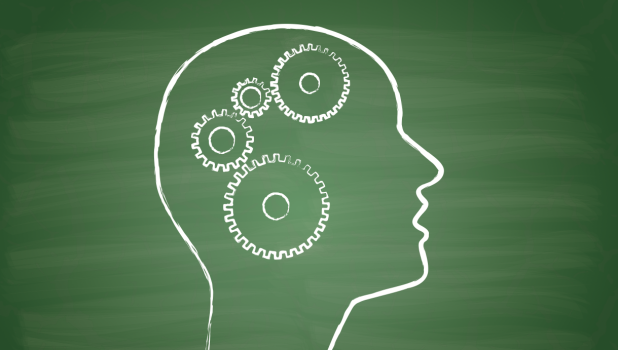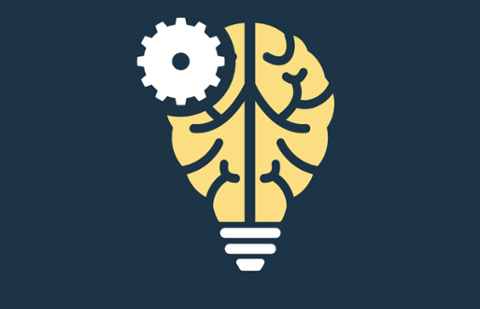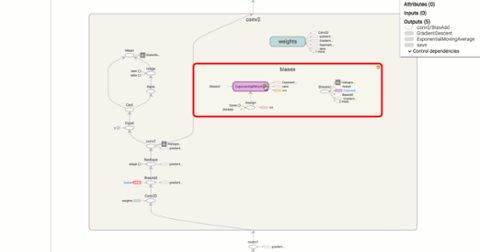 DARPA wants to improve how we build machine-learning applications. To that end, the agency—tasked by the U.S. Department of Defense with researching advanced technologies for military use—has launched the Probabilistic Programming for Advanced Machine Learning (PPAML) program, with the aim of creating powerful applications that need less data to produce accurate insights. Machine learning has occupied researchers’ attentions for the past several decades. Back in 1959, computer scientist Arthur Lee Samuel famously defined as a “field of study that gives computers the ability to learn without being explicitly programmed.” The potential benefits are certainly tantalizing: with a bit of human instruction, a software platform could become increasingly sophisticated, to the point where it could handle new problems on its own. “We want to do for machine learning what the advent of high-level program languages 50 years ago did for the software development community as a whole,” Kathleen Fisher, a DARPA program manager, wrote in a statement detailing the project. DARPA’s ultimate goal, she added, are future machine-learning projects that “won’t require people to know everything about both the domain of interest and machine learning to build useful machine-learning applications.” Achieving that end will require the development of new probabilistic programming languages tailored to probabilistic inference, something the agency hopes will lower the barrier to machine-learning work. DARPA plans on hosting a Proposers’ Day for PPAML on April 10. A Website for the conference suggests several PPAML sub-goals, including “to make machine learning model code shorter,” reduce development time, “facilitate the construction of richer models,” and ensure lower levels of expertise needed to actually build machine-learning applications. The agency’s primary responsibility is to the military, of course, but other industries could benefit from improvements in machine learning—particularly those in which executives and researchers need to make decisions based on complex datasets, with multiple unknowns in the mix. Healthcare is such an industry; researchers at Indiana University, for example, are currently hard at work on an artificial-intelligence framework that can predict outcomes of treatment, potentially reducing healthcare costs while improving patient outcomes. If that framework works as planned, it will be capable of adjusting its decisions and insights based on evolving information. “The Markov Decision Processes and Dynamic Decision Networks enable the system to deliberate about the future, considering all the different possible sequences of actions and effects in advance,” one of the project researchers wrote in a statement released by the university, “even in cases where we are unsure of the effects.” Healthcare aside, machine learning is a huge field; whatever DARPA produces, chances are good the impact could be very, very big. Image: a2bb5s/Shutterstock.com
DARPA wants to improve how we build machine-learning applications. To that end, the agency—tasked by the U.S. Department of Defense with researching advanced technologies for military use—has launched the Probabilistic Programming for Advanced Machine Learning (PPAML) program, with the aim of creating powerful applications that need less data to produce accurate insights. Machine learning has occupied researchers’ attentions for the past several decades. Back in 1959, computer scientist Arthur Lee Samuel famously defined as a “field of study that gives computers the ability to learn without being explicitly programmed.” The potential benefits are certainly tantalizing: with a bit of human instruction, a software platform could become increasingly sophisticated, to the point where it could handle new problems on its own. “We want to do for machine learning what the advent of high-level program languages 50 years ago did for the software development community as a whole,” Kathleen Fisher, a DARPA program manager, wrote in a statement detailing the project. DARPA’s ultimate goal, she added, are future machine-learning projects that “won’t require people to know everything about both the domain of interest and machine learning to build useful machine-learning applications.” Achieving that end will require the development of new probabilistic programming languages tailored to probabilistic inference, something the agency hopes will lower the barrier to machine-learning work. DARPA plans on hosting a Proposers’ Day for PPAML on April 10. A Website for the conference suggests several PPAML sub-goals, including “to make machine learning model code shorter,” reduce development time, “facilitate the construction of richer models,” and ensure lower levels of expertise needed to actually build machine-learning applications. The agency’s primary responsibility is to the military, of course, but other industries could benefit from improvements in machine learning—particularly those in which executives and researchers need to make decisions based on complex datasets, with multiple unknowns in the mix. Healthcare is such an industry; researchers at Indiana University, for example, are currently hard at work on an artificial-intelligence framework that can predict outcomes of treatment, potentially reducing healthcare costs while improving patient outcomes. If that framework works as planned, it will be capable of adjusting its decisions and insights based on evolving information. “The Markov Decision Processes and Dynamic Decision Networks enable the system to deliberate about the future, considering all the different possible sequences of actions and effects in advance,” one of the project researchers wrote in a statement released by the university, “even in cases where we are unsure of the effects.” Healthcare aside, machine learning is a huge field; whatever DARPA produces, chances are good the impact could be very, very big. Image: a2bb5s/Shutterstock.com DARPA Wants to Improve Machine Learning
 DARPA wants to improve how we build machine-learning applications. To that end, the agency—tasked by the U.S. Department of Defense with researching advanced technologies for military use—has launched the Probabilistic Programming for Advanced Machine Learning (PPAML) program, with the aim of creating powerful applications that need less data to produce accurate insights. Machine learning has occupied researchers’ attentions for the past several decades. Back in 1959, computer scientist Arthur Lee Samuel famously defined as a “field of study that gives computers the ability to learn without being explicitly programmed.” The potential benefits are certainly tantalizing: with a bit of human instruction, a software platform could become increasingly sophisticated, to the point where it could handle new problems on its own. “We want to do for machine learning what the advent of high-level program languages 50 years ago did for the software development community as a whole,” Kathleen Fisher, a DARPA program manager, wrote in a statement detailing the project. DARPA’s ultimate goal, she added, are future machine-learning projects that “won’t require people to know everything about both the domain of interest and machine learning to build useful machine-learning applications.” Achieving that end will require the development of new probabilistic programming languages tailored to probabilistic inference, something the agency hopes will lower the barrier to machine-learning work. DARPA plans on hosting a Proposers’ Day for PPAML on April 10. A Website for the conference suggests several PPAML sub-goals, including “to make machine learning model code shorter,” reduce development time, “facilitate the construction of richer models,” and ensure lower levels of expertise needed to actually build machine-learning applications. The agency’s primary responsibility is to the military, of course, but other industries could benefit from improvements in machine learning—particularly those in which executives and researchers need to make decisions based on complex datasets, with multiple unknowns in the mix. Healthcare is such an industry; researchers at Indiana University, for example, are currently hard at work on an artificial-intelligence framework that can predict outcomes of treatment, potentially reducing healthcare costs while improving patient outcomes. If that framework works as planned, it will be capable of adjusting its decisions and insights based on evolving information. “The Markov Decision Processes and Dynamic Decision Networks enable the system to deliberate about the future, considering all the different possible sequences of actions and effects in advance,” one of the project researchers wrote in a statement released by the university, “even in cases where we are unsure of the effects.” Healthcare aside, machine learning is a huge field; whatever DARPA produces, chances are good the impact could be very, very big. Image: a2bb5s/Shutterstock.com
DARPA wants to improve how we build machine-learning applications. To that end, the agency—tasked by the U.S. Department of Defense with researching advanced technologies for military use—has launched the Probabilistic Programming for Advanced Machine Learning (PPAML) program, with the aim of creating powerful applications that need less data to produce accurate insights. Machine learning has occupied researchers’ attentions for the past several decades. Back in 1959, computer scientist Arthur Lee Samuel famously defined as a “field of study that gives computers the ability to learn without being explicitly programmed.” The potential benefits are certainly tantalizing: with a bit of human instruction, a software platform could become increasingly sophisticated, to the point where it could handle new problems on its own. “We want to do for machine learning what the advent of high-level program languages 50 years ago did for the software development community as a whole,” Kathleen Fisher, a DARPA program manager, wrote in a statement detailing the project. DARPA’s ultimate goal, she added, are future machine-learning projects that “won’t require people to know everything about both the domain of interest and machine learning to build useful machine-learning applications.” Achieving that end will require the development of new probabilistic programming languages tailored to probabilistic inference, something the agency hopes will lower the barrier to machine-learning work. DARPA plans on hosting a Proposers’ Day for PPAML on April 10. A Website for the conference suggests several PPAML sub-goals, including “to make machine learning model code shorter,” reduce development time, “facilitate the construction of richer models,” and ensure lower levels of expertise needed to actually build machine-learning applications. The agency’s primary responsibility is to the military, of course, but other industries could benefit from improvements in machine learning—particularly those in which executives and researchers need to make decisions based on complex datasets, with multiple unknowns in the mix. Healthcare is such an industry; researchers at Indiana University, for example, are currently hard at work on an artificial-intelligence framework that can predict outcomes of treatment, potentially reducing healthcare costs while improving patient outcomes. If that framework works as planned, it will be capable of adjusting its decisions and insights based on evolving information. “The Markov Decision Processes and Dynamic Decision Networks enable the system to deliberate about the future, considering all the different possible sequences of actions and effects in advance,” one of the project researchers wrote in a statement released by the university, “even in cases where we are unsure of the effects.” Healthcare aside, machine learning is a huge field; whatever DARPA produces, chances are good the impact could be very, very big. Image: a2bb5s/Shutterstock.com 

